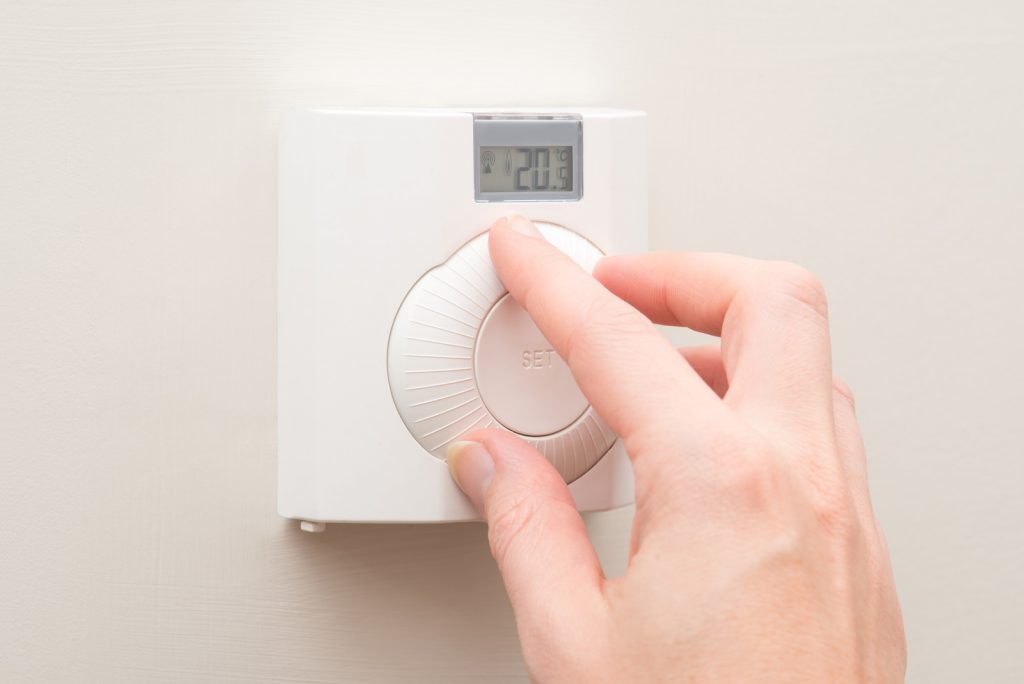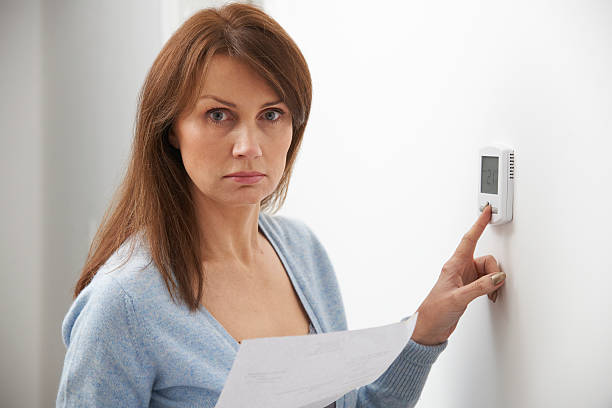If you’ve been having issues with your heating thermostat not working, you’re not alone. Many homeowners experience thermostat problems at some point, and it can be frustrating when you can’t control the temperature in your home. While thermostat issues can be caused by a variety of factors, there are some common causes that you can troubleshoot yourself before calling a professional.
Causes of a thermostat not working
One of the most common causes of thermostat issues is dead batteries. If your thermostat is battery-powered, try replacing the batteries to see if that fixes the problem. If your thermostat is hardwired into your home’s electrical system, loose wiring could be the issue. Check the wiring to make sure it is secure and not damaged.

Main causes of a heating thermostat not working
- Dead batteries: If your thermostat is battery-powered and it’s not working properly, the first thing you should check is the battery. Even if the battery is not completely dead, a low battery can cause issues with the thermostat. If the battery is low or dead, simply replace it with a new one. Be sure to use the correct type of battery for your thermostat.
- Loose wiring: If your thermostat is hardwired into your home’s electrical system and it’s not working properly, loose wiring could be the issue. Check the wiring to make sure it is secure and not damaged. If the wiring is loose or damaged, it could cause issues with the thermostat. Tighten any loose connections and replace any damaged wiring.
- Dirty sensors: The sensors in your thermostat can become dirty over time, which can affect its accuracy. Dust, dirt, and other debris can accumulate on the sensors, causing them to malfunction. To clean the sensors, use a soft, dry cloth to gently wipe away any dirt or debris. Be careful not to damage the sensors as you clean them.
- Incorrect settings: If you’ve recently made changes to the thermostat settings and the unit is not working properly, double-check to make sure the settings are correct. Make sure the thermostat is set to “heat” and that the temperature is set to a level that is higher than the current room temperature. If the thermostat is set to “cool,” it will not turn on the heating system.
- Malfunctioning thermostat: If you’ve tried all of the above troubleshooting steps and your thermostat is still not working, it’s possible that the thermostat itself is malfunctioning. This could be due to a variety of factors, including a faulty component or a software issue. In this case, it’s best to call a professional to diagnose and fix the problem.
- Malfunctioning heating system: If your thermostat is working properly but your heating system is not turning on, there could be an issue with the heating system itself.
- Tripped circuit breaker: If your thermostat is not working, it’s possible that a circuit breaker has tripped. Circuit breakers are designed to protect your home’s electrical system from damage by shutting off the power when an issue is detected. If a circuit breaker has tripped, it will need to be reset before the power can be restored to your thermostat. To reset a circuit breaker, locate the main electrical panel and look for a circuit breaker that is in the “off” position. Switch it to the “on” position to reset it.
If you’re still having issues with your thermostat after trying the above troubleshooting steps, it’s always best to call a professional for help. A trained heating engineer will be able to diagnose the problem and provide a solution.
Consequences of a thermostat not working properly
Inaccurate temperature control
If your thermostat is not working properly, it may not be able to accurately control the temperature in your home. This can result in the temperature being too cold or too hot, which can be uncomfortable.
Higher energy bills
If your thermostat is not working properly, it may cause your heating and cooling systems to run more often than they need to. This can result in higher energy bills as you are using more energy to heat or cool your home.
Wear and tear on your heating system
If your thermostat is not working properly, it can cause your heating and cooling systems to work harder than they need to. This can result in increased wear and tear on the systems, which can lead to costly repairs or early replacement.
Inconvenience
If your thermostat is not working properly, it can be inconvenient as you may have to manually adjust the temperature in your home to try to maintain a comfortable level.

Overall, a thermostat that is not working properly can be a significant inconvenience and can also lead to higher energy bills and increased wear and tear on your heating system.
Resetting your thermostat
Resetting your thermostat can sometimes help to fix issues that you may be experiencing. Here are the steps for resetting a thermostat:
- Locate the reset button on your thermostat. This button is typically located on the front or side of the thermostat and is usually labelled “reset.”
- Press and hold the reset button for a few seconds. Some thermostats may require you to hold the reset button for 10 seconds or more.
- Release the reset button and wait for the thermostat to reboot. This process can take a few minutes.
- Once the thermostat has rebooted, try using it again to see if the issue has been resolved.
It’s worth noting that resetting your thermostat will not fix all issues. If you’re still experiencing problems after resetting the thermostat, it’s best to try some of the other troubleshooting steps outlined in this article or call a professional for help.
Read related articles:
